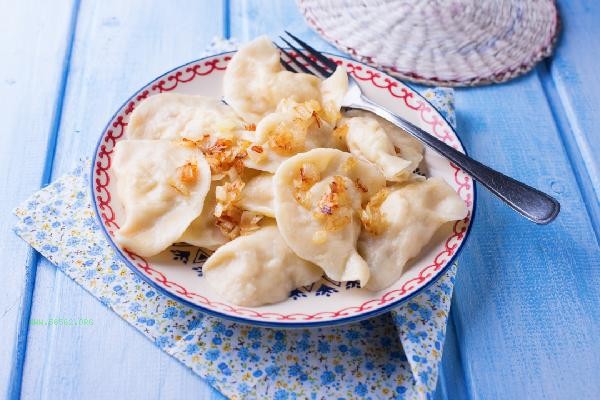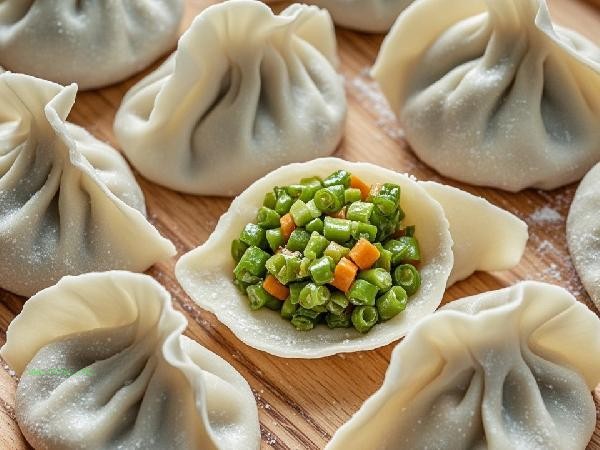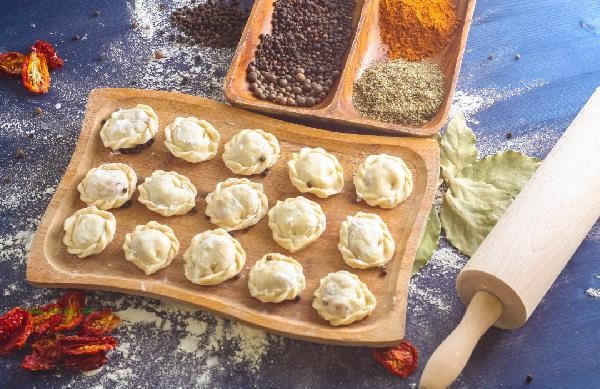Adding a small amount of salt or cooking oil when cooking dumplings can help prevent the dumpling skin from cracking. The damage to dumpling wrappers is mainly related to factors such as water temperature control, mixing method, dough toughness, filling moisture content, and pot selection.

1. Adding 3 grams of salt per 500 grams of flour can enhance gluten elasticity and make dumpling wrappers more resistant to high temperatures during cooking. The ionic environment formed after the dissolution of salt can make the molecular structure of starch more compact, reducing the probability of damage under boiling water impact. It should be noted that excessive salt intake can cause the dough to harden and affect the taste.
2. Edible oil
After boiling water, adding a few drops of edible oil can form a barrier film on the water surface to reduce surface tension. This oil film can buffer the collision and friction between dumplings, while reducing the adhesion caused by starch leaching. It is recommended to choose corn oil or sunflower seed oil with a light odor to avoid strong flavor oils such as olive oil affecting the original flavor.
3. Water temperature control
Wait until the water is completely boiling before adding dumplings, and maintain medium to high heat to stabilize the water temperature above 95 ℃. When the water temperature is insufficient, the starch gelatinization is not sufficient, and the dough is prone to water absorption, softening, and cracking. After the water boils, add cool water in a timely manner to cool down, and use the principle of thermal expansion and contraction to help shape the dough.
4. Mixing Method

After the dumplings are put into the pot, gently push and stir along the edge of the pot to avoid the spoon directly touching the dumpling skin. Slowly stirring clockwise can create a vortex in the water flow, allowing the dumplings to be heated evenly. Avoid frequent flipping or excessive force, as mechanical external forces are one of the main causes of skin breakage.
5. Filling Processing
Vegetable filling needs to be squeezed dry in advance, while meat filling needs to be thoroughly stirred and vigorously kneaded. If the moisture content of the filling is too high, it will generate steam pressure during cooking to break the dough. It is recommended to control the ratio of meat and vegetable fillings at 3:7, and add an appropriate amount of starch or egg white to increase viscosity.
During the process of cooking dumplings, observe the condition of the dumplings. When the dumplings float up, add a small amount of cold water and repeat two to three times to make the dough more elastic. Use a deep pot and keep the water sufficient to avoid stacking dumplings under pressure. Boil fresh dumplings in boiling water, and thaw frozen dumplings with warm water before cooking. Gently scoop out the dumplings with a strainer to maintain their complete shape. Pay attention to a balanced diet in daily life. Dumplings can be paired with seasonings such as vinegar and garlic paste to promote digestion and absorption.









Comments (0)
Leave a Comment
No comments yet
Be the first to share your thoughts!